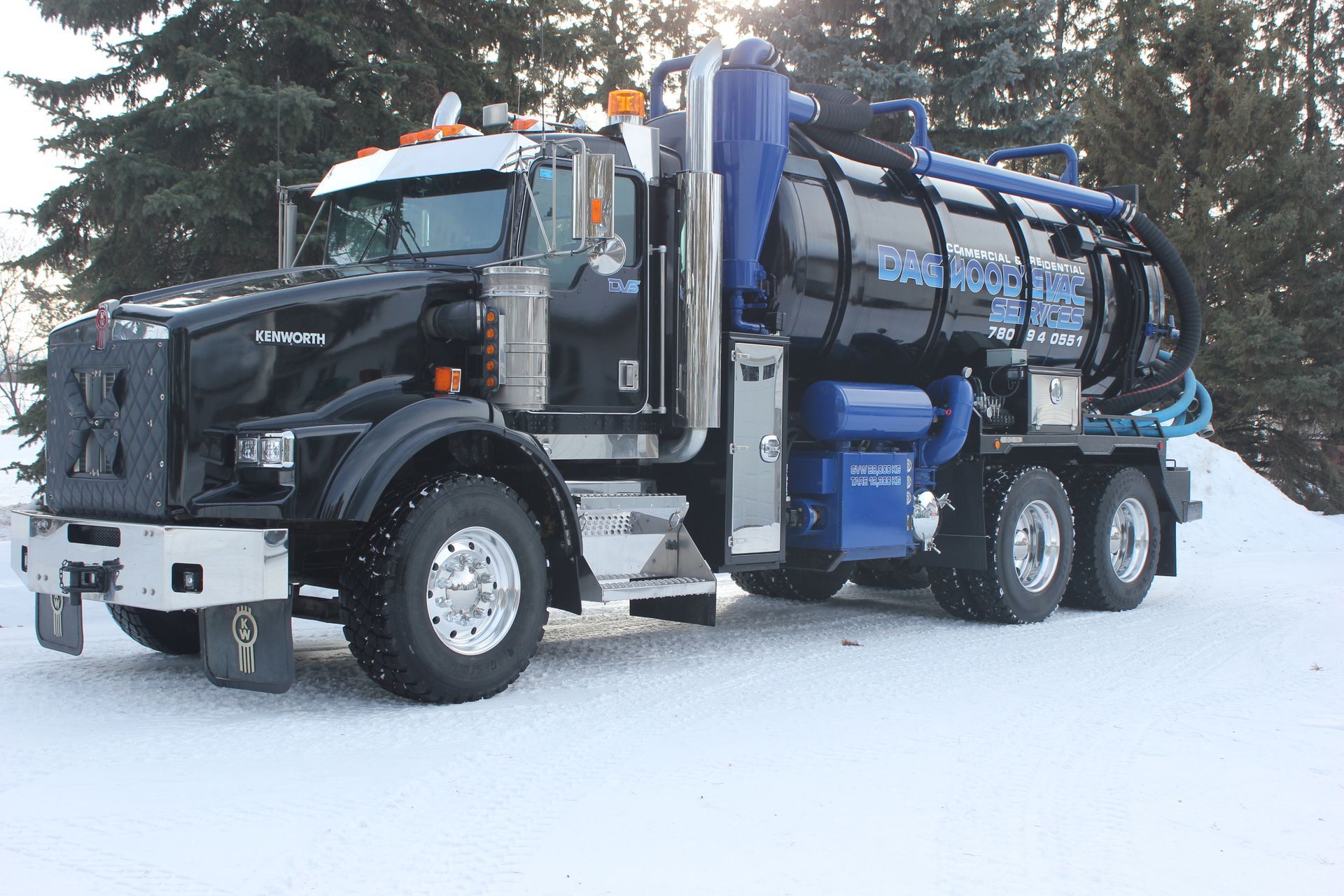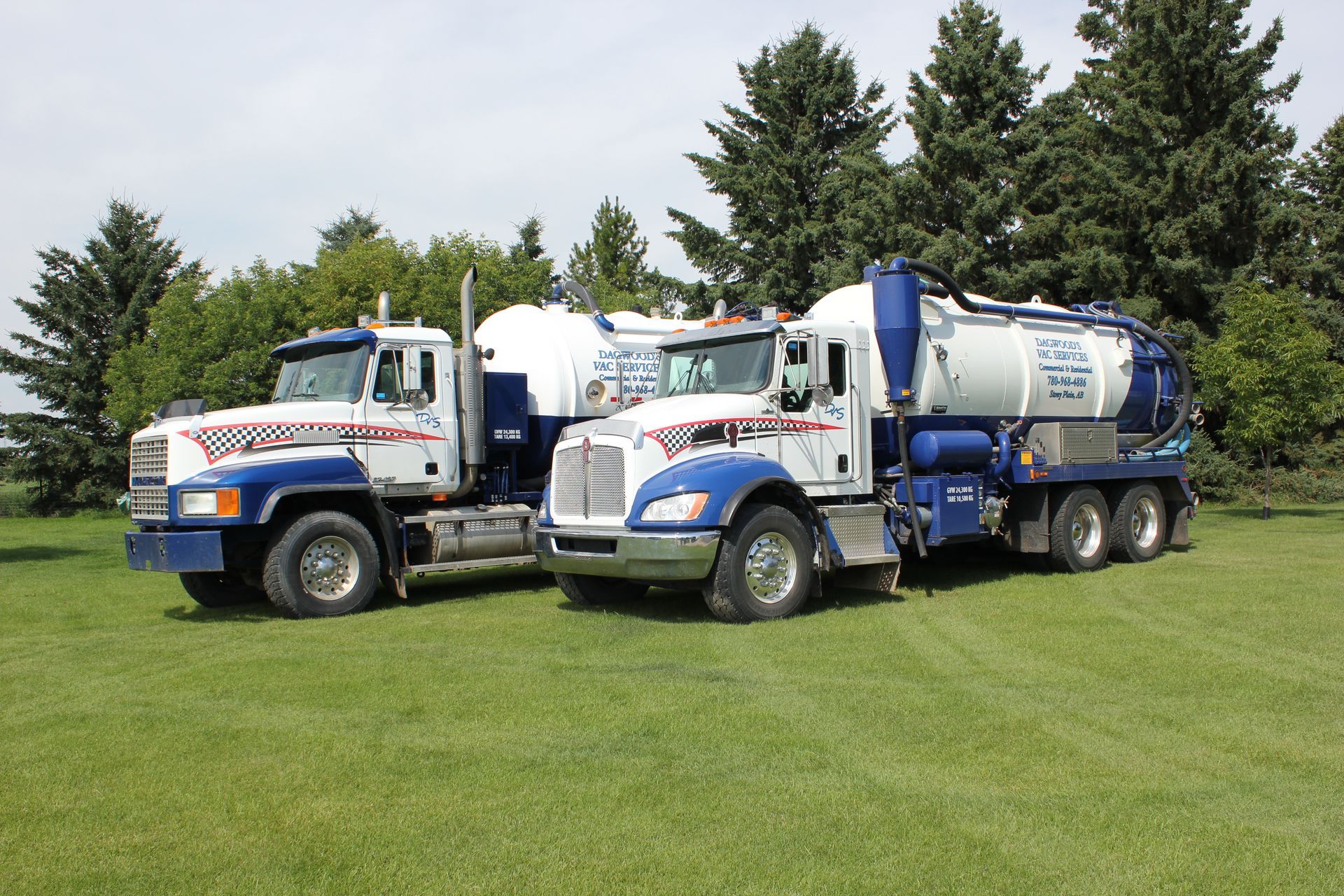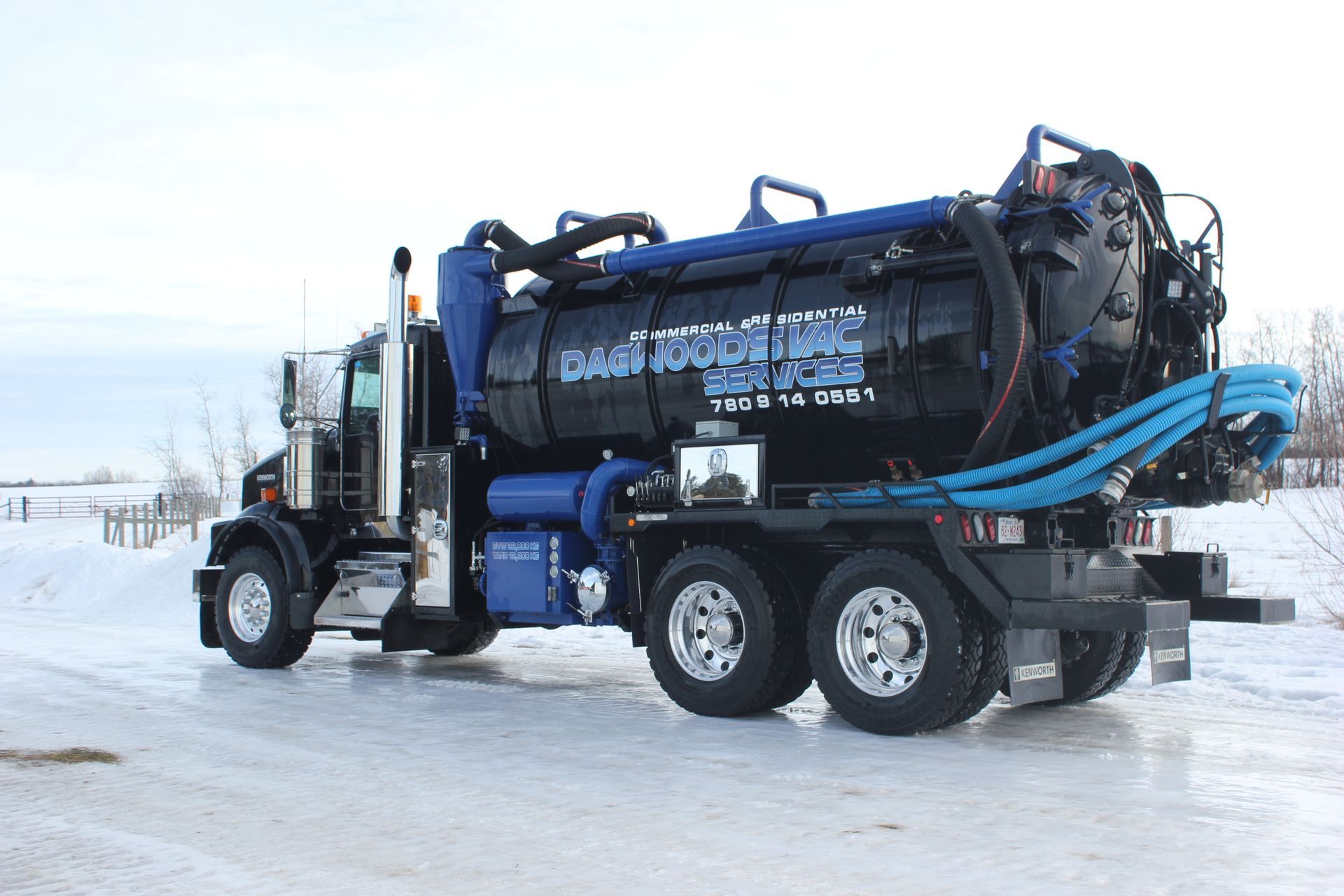We can help maintain your septic system by pumping and emptying your tanks, sump pumps, and more. We provide safe solid and liquid waste hauling and disposal services.
Edmonton Septic Systems
What are the differences?
Septic Tanks vs. Holding Tanks vs. Packaged Sewage Treatment Plants
While holding tanks, septic tanks and packaged sewage treatment plants are all used to serve a similar purpose, there are a few key differences that are important to note. Here we will discuss what each one is, how they are similar and how they differ from one another.
Each system comes with its own pros and cons, depending on your situation and location. No matter which type of system you have, Dagwood Vac Services is ready to answer your questions.
What is a holding tank?
A holding tank is and does exactly as the name would suggest; it is a single-compartment, sealed tank that holds all wastewater and sewage leaving your home. This means everything leaving our home through a drain will end up in this tank. Everything that gets washed down the sink, flushed down the toilet, or wastewater from laundry and the dishwasher goes straight into the holding tank. A house or cottage might use a holding tank when they are not connected to the municipal sewers, and the conditions or space are not suitable for an on-site septic system.
Since everything leaving your home by a drain will end up in the single chamber of the holding tank, they need to be emptied fairly regularly, approximately every 6-8 weeks. The length of time between holding tank pumping services will vary according to how much wastewater your household is producing and is often related to the number of inhabitants or the volume of the tank. Holding tanks will be equipped with an alarm that sounds when the tank is nearing maximum capacity to indicate that it should be emptied in a timely manner. Use our sewer and wastewater hauling company to fulfill all your pumping services.
What is a septic tank?
A septic tank is like a more sophisticated cousin to the holding tank. Used in homes without connections to the municipal sewer system, septic tanks have multiple compartments that allow waste and water to be separated and drained but also need to be pumped.
Septic tanks consist of two side-by-side chambers, each with its own lid or access point. All wastewater and sewage will enter the first chamber of a septic tank via the inlet baffle, which directs the wastewater to the mid-level point of the tank. Within a septic tank, the wastewater will naturally separate into three layers. There is sludge on the bottom, surface scum and water in the middle, called effluent. Water or effluent from the midlevel will pass through an opening or pipe to the partition wall that divides the two compartments of the tank. From the second compartment, an outlet baffle will pull the water out and direct it to a set of outlet pipes. The outlet baffle will sit in the effluent at the midlevel to prevent scum or sludge from leaving the tank and contaminating the outlet pipes or other components. Outlet pipes in the drain field will release the water or effluent into the ground soil.
Since water is naturally released from a septic tank system pumping or emptying the tank is done less frequently, approximately every one to three years. However, this will again vary based on water usage and the number of people in your home.
What is a packaged sewage treatment plant?
A packaged sewage treatment plant includes a mechanical component for moving and treating wastewater. Typically consisting of three chambers or compartments, a packaged sewage treatment plant will separate the waste and then treat the grey water before moving it to the drainage line and into the septic field. Due to the mechanical component required for a packaged sewage treatment plant, it requires a permanent and continuous electrical supply to operate. Additionally, with the three chambers, the released wastewater is often cleaner than would otherwise be seen.
Similar to a septic tank system, you will still need to have a packaged sewage treatment plant professionally emptied or pumped to remove the sludge every few years.



How are they similar?
All three systems are similar in that they are all used to collect and manage wastewater, sewage and solid waste in homes that are not connected to the municipal sewer system. For all three systems, all grey water and waste leaving your home via a drain will end up inside the holding tank, septic tank or packaged sewage treatment. With any of these systems, you will want to be conscious of how much water you are consuming, what is going down your drains and when the tank will need to be professionally emptied or pumped out.
Septic tanks and packaged sewage treatment plants are similar in that they both release wastewater through pipes underground on your property. However, none of the three systems has any chemical component, reducing the environmental impact of the water discharged.
How are they different?
A major difference between the three types of sewage collection is when and where they can be used. Local regulations may be the ultimate deciding factor on what you can have installed on your property or area.
Since holding tanks do not release any wastewater, they may be better suited to areas where space is limited or where conditions do not allow for the release of sewage and grey water. Holding tanks do not have any working components and are likely a cheaper option to have installed, but they will come with a more frequent emptying service schedule. A holding tank will also require a smaller space compared to the septic tanks and the required outlet pipes.
Septic tanks and packaged sewage treatment plants differ primarily based on the mechanical components and the quality of the wastewater produced. Septic tanks work based on gravity and do not include mechanical components. Packaged sewage treatment plants, on the other hand, have a mechanical component for moving the water between chambers. While the grey water produced by packaged sewage treatment plant is far from being clean or usable, it is far cleaner than the water that leaves a septic tank system. This means that a packaged sewage treatment plant can be more environmentally friendly, and there is less concern about the wastewater causing contamination of local water sources like streams or ponds.
Edmonton Vac Truck Services
Septic Tank
Septic tank emptying services you can rely on. We are a professional and quality vac truck company that offers pumping services.
Holding Tank
Keeping businesses and residents holding tanks emptied and ready for use. All your septic needs from the best vac truck company!
Sump Pump
Pumping out your sump pump keeps things flowing smoothly. Leave your sump in our highly-trained and qualified hands.
Septic Pumping Help
Your Septic Pump
Replacing a septic or sewer pump before it breaks down is the best way to prevent flooding from backup. Learn more about your septic pump.
Packaged Sewage
Treatment Plant
Sewer treatment system assistance is what we do! Keeping your 3-compartments operational by removing sludge & wastewater for safe hauling & disposal.
Potable Water
Hauling
We supply potable water for commercial & residential. We also own Evjen Water Hauling.
Call (780) 499-8318

